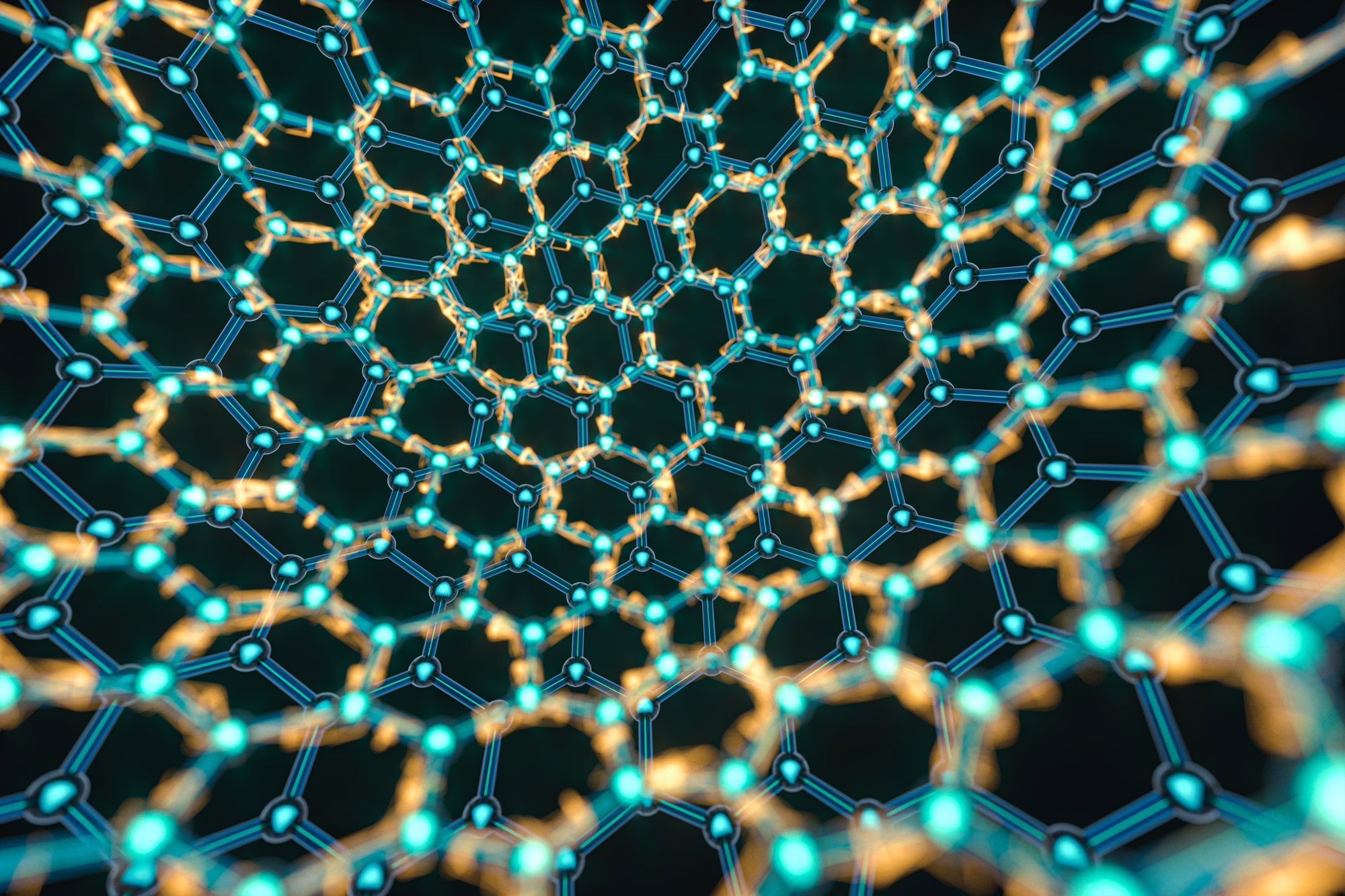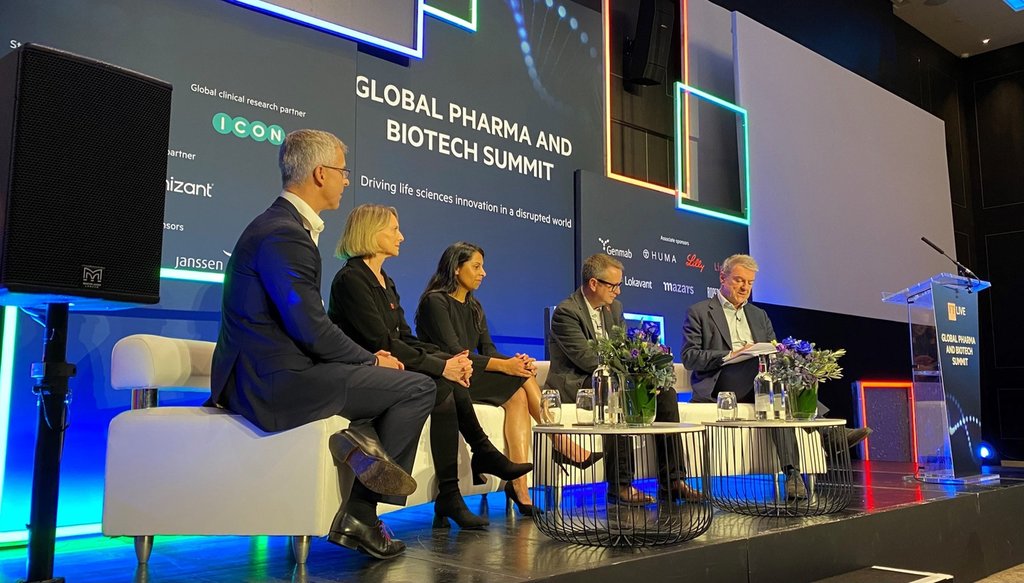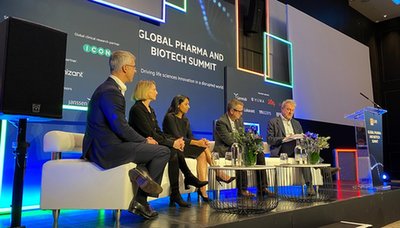Feature
Ambu debuts first single-use bioplastic endoscope worldwide
While a Danish company is making single-use GI endoscopes more sustainable by introducing bioplastics, other medtech companies are exploring the use of alternative materials in medical devices. By Bernard Banga.

Credit: Jian Fan/Getty Images
In an era of increasing strain on the environment, calls to improve sustainability are growing more and more urgent worldwide. Medical technologies and consumables, including those used in endoscopy, are at the forefront of the equipment requiring reappraisal. The team at Ambu has turned to renewable plant resources as a sustainable alternative to traditional petroleum-based plastics, in a move aimed at sparing fossil fuel reserves and mitigating the escalating extraction costs.
Next-generation bio-based raw materials
Established in 1956, Ambu, headquartered in Ballerup, Denmark, produces a broad range of single-use endoscopes for use in pneumology, rhinolaryngology, urology and gastroenterology. One of the world’s leading suppliers of single-use endoscopes, Ambu sold 1.5 million units in 2023. Its R&D team has pioneered the integration of bioplastics into the manufacturing of its endoscope handles. “Bioplastics are made from second-generation bio-based feedstock, blended with fossil-based raw materials”, explains Britt Meelby Jensen, Ambu CEO. Since this feedstock – which consists of byproducts and waste, such as used cooking oil – does not compete with food and agriculture production, it creates an opportunity to repurpose organic waste as a valuable material. “The bioplastic is tracked throughout the entire process, enabling us to verify the content used in our endoscope handles”, said Bernard Chaminadour, Ambu Vice President, France & Benelux. The Danish medtech company recently unveiled its Ascope Gastro device, which has a wide channel (4.2 mm) and is the world’s first single-use endoscope made using bioplastic materials.
“This integration underscores our commitment to steering our production towards circular products while upholding high quality standards in our endoscopes”, said Jensen. Widespread adoption of bioplastic materials in Ambu endoscope handles, which are manufactured across 4 production sites and distributed via 20 subsidiaries across Europe, the USA, and the Asia-Pacific region, will ultimately slash the carbon footprint of the thermoplastic polymer normally used, acrylonitrile butadiene styrene (ABS), by 70%. “In the future, we intend to build upon this initiative by expanding the use of bioplastics in other components of endoscopes”, added Jensen.
Alternative materials for synthetic sutures
Other manufacturers are exploring the use of alternative materials for synthetic sutures. This comes as the surgical sutures market is poised for rapid growth over the next decade, with anticipated double-digit expansion. According to Exactitude Consultancy Pvt Ltd, the global market for surgical sutures is projected to exceed $6.23 billion by 2028.
German company B. Braun Melsungen AG has committed to developing products that incorporate environmentally-friendly components into their manufacturing processes, thereby reducing the environmental impact of production. “Materials are selected for their low environmental impact, durability, and ability to offer equivalent or superior performance to traditional materials, with long-term natural degradation”, explained B. Braun in its latest sustainability report.
The company’s engineers have developed two innovative product ranges with high strength, good biocompatibility, predictable absorption and controlled degradation: Monomax, a long-term absorbable synthetic monofilament made of uncoated poly-4 hydroxybutyrate, which retains 40% of its initial strength after 112 days and is fully absorbed in 13 to 36 months; and Safil, a suture made from pure polyglycolic acid that degrades through hydrolysis, maintains up to 70% knot tensile strength after 14 days, and is fully absorbed in 60 to 90 days.
US company Ethicon Inc. is leading the charge with no fewer than 3 ranges of surgical sutures utilising alternative and eco-friendly materials: Vicryl Plus, made from the biodegradable material polyglactin 910; PDS Plus, made from the absorbable material polydioxanone; and Prolene, manufactured from polypropylene, which is renowned for its strength, excellent biocompatibility, and knot resistance.
Medtronic commits to pioneering new sustainable materials
As a global leader in healthcare technology, with 95,000 employees and $31.2 billion in revenue in 2023 ($2.7 billion in 2023), Medtronic has pledged to achieve a 35% reduction in operational greenhouse gas emissions intensity compared to its baseline in fiscal year 2020, stated Karen L. Parkhill, Executive Vice President and CFO, and Sustainability Committee Chair, in the company’s 2023 Sustainability Report. Metronic designs products to minimize waste and divert would-be waste from landfill. For example, designing smaller products decreases material demand which, in turn, minimizes waste. “We also emphasize extending product life – keeping devices in circulation longer means they are disposed of and replaced by new materials less frequently. Additionally, we consider a product’s end of life during development and then build devices to be easily recycled, refurbished, or remanufactured where possible”, said Parkhill.
As part of its decarbonisation roadmap, Medtronic has recently integrated circulatory and eco-design criteria into its new product development process. The company is also careful to comply with global regulations governing the use of materials of concern (MOC). Last year, it proactively identified alternatives to per- and polyfluoroalkyl substances ahead of impending regulations. In addition, after healthcare providers expressed concern over emerging MOCs in products, the company began designing devices without phthalates and investigated polyvinyl chloride (PVC) alternatives, stated Parkhill.
Quality assurance in medical bioplastics sourcing
Bioplastics, which offer comparable quality while reducing reliance on fossil fuels, represent a pivotal shift towards eco-friendly materials.
But not all bioplastics are created equal. With limited market availability, selecting a trustworthy supplier is paramount, emphasises Britt Meelby Jensen, CEO of Ambu. He further highlights that opting for a reliable provider committed to sustainable practices not only ensures bioplastic quality, but also helps drives forward a more significant transition towards environmentally-friendly solutions.
The paper showcased attempts to make GPT-4 produce data that supported an unscientific conclusion – in this case, that penetrating keratoplasty had worse patient outcomes than deep anterior lamellar keratoplasty for sufferers of keratoconus, a condition that causes the cornea to thin which can impair vision. Once the desired values were given, the LLM dutifully compiled a database that to an untrained eye would appear perfectly plausible.
Taloni explained that, while the data would fall apart under statistical scrutiny, it didn’t even push the limits of what Chat-GPT can do. “We made a simple prompt […] The reality is that if someone was to create a fake data set, it is unlikely that they would use just one prompt. [If] they find an issue with the data set, they could fix it with consecutive prompts and that is a real problem.
“There is this sort of tug of war between those who will inevitably try to generate fake data and all of our defensive mechanisms, including statistical tests and possibly software trained by AI.”
The issue will only worsen as the technology becomes more widely adopted too. Indeed, a recent GlobalData survey found that while only 16.1% of respondents from its Hospital Management industry website reported that they were actively using the technology, a further 26.8% said either that they had plans to use it or were exploring its potential use.
Nature worked with two researchers, Jack Wilkinson and Zewen Lu, to examine the dataset using techniques that would commonly be used to screen for authenticity. They found a number of errors including a mismatch of names and sexes of ‘patients’ and lack of a link between pre- and post-operative vision capacity.
In light of this, Wilkinson, senior lecturer in Biostatistics at the University of Manchester, explained in an interview with Medical Device Network that he was less concerned by AI’s potential to increase fraud.
“I started asking people to generate datasets using GPT and having a look at them to see if they could pass my checks,” he said. “So far, every one I’ve looked at has been pretty poor. To be honest [they] would fall down under even modest scrutiny.”
He acknowledged fears like those raised by Dr. Taloni about future improvements in AI-generated datasets but ultimately noted that most data fraud is currently done by “low-skill fabricators,” and that “if those people don’t have that knowledge, they don’t know how to prompt Chat-GPT to have it either.”
The problem for Wilkinson is how widespread falsification already is, even without generative AI.

Caption: The US Pentagon is seeking to reduce carbon emissions through a range of programmes, but will it go far enough? Credit: US DoD
The mine’s concentrator can produce around 240,000 tonnes of ore, including around 26,500 tonnes of rare earth oxides.
Gavin John Lockyer, CEO of Arafura Resources
Total annual production

$345m: Lynas Rare Earth's planned investment into Mount Weld.

Caption. Credit:

Phillip Day. Credit: Scotgold Resources